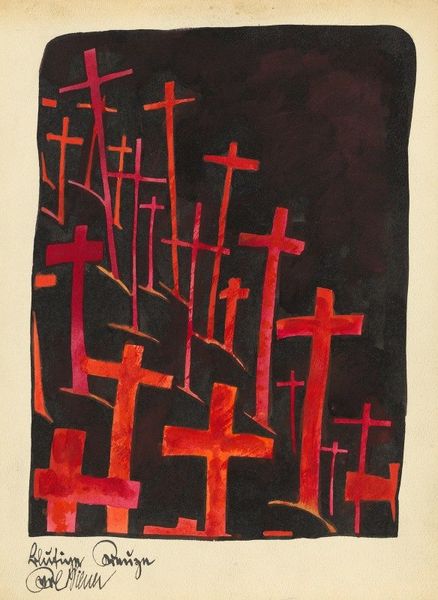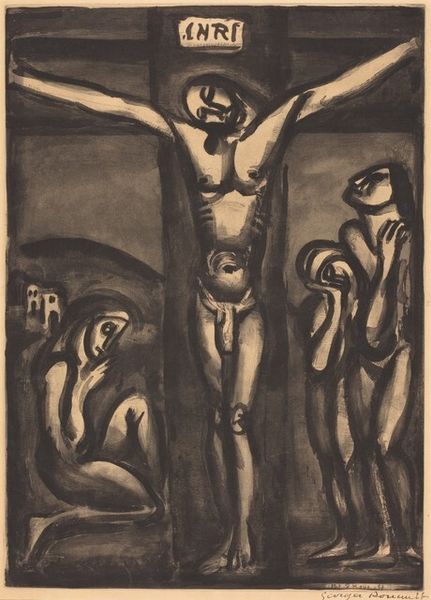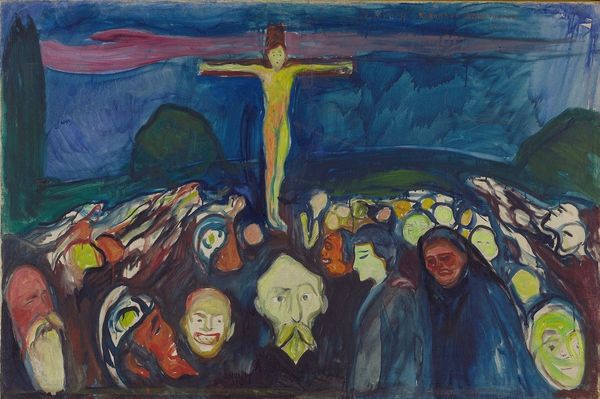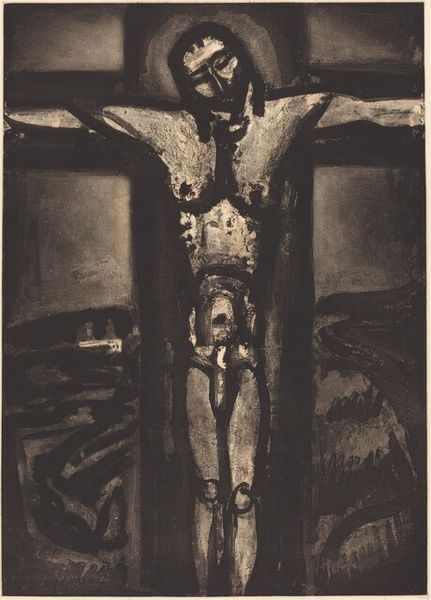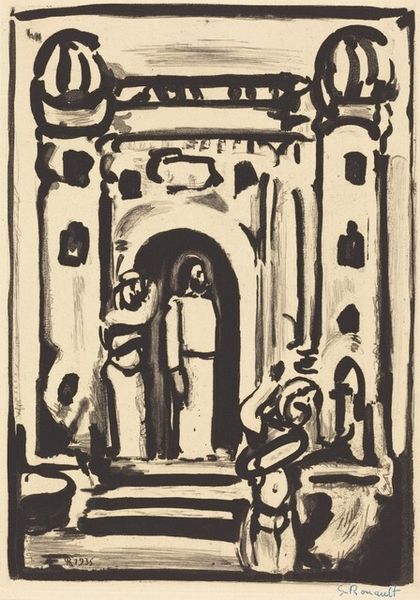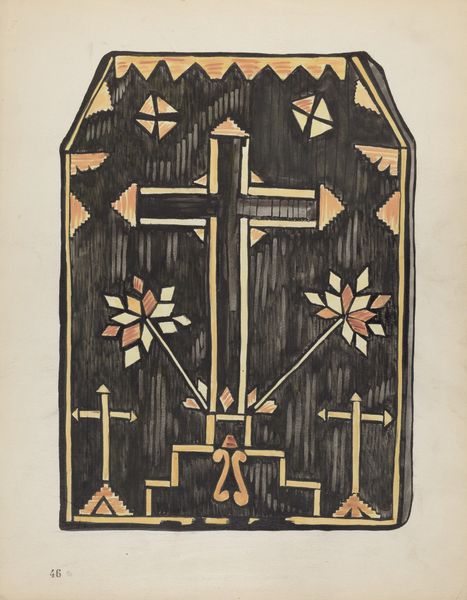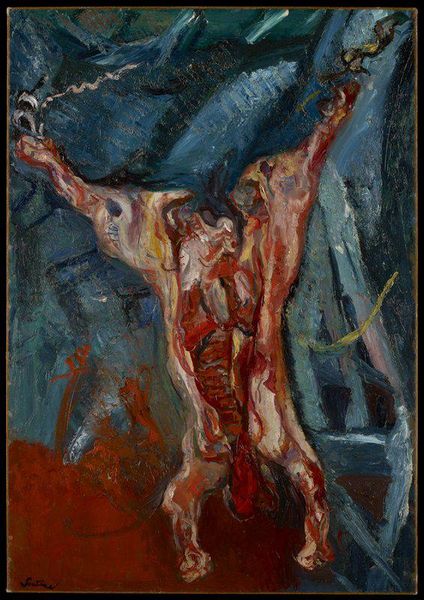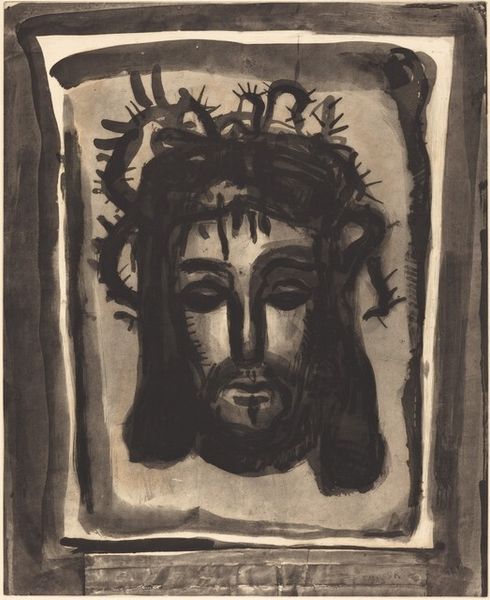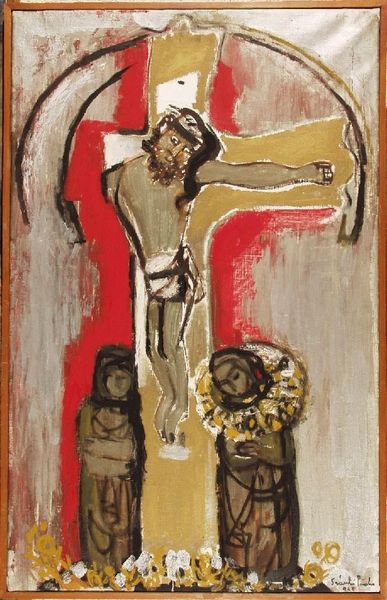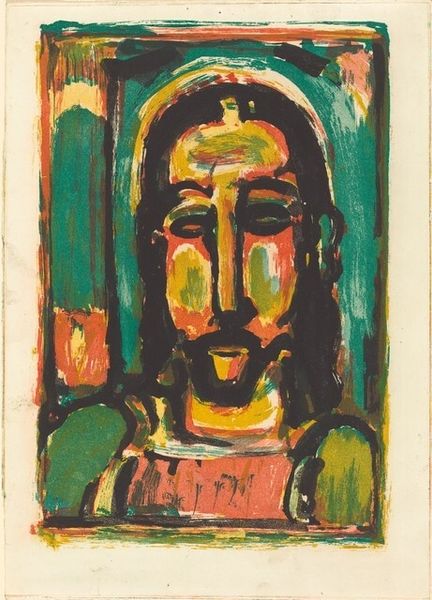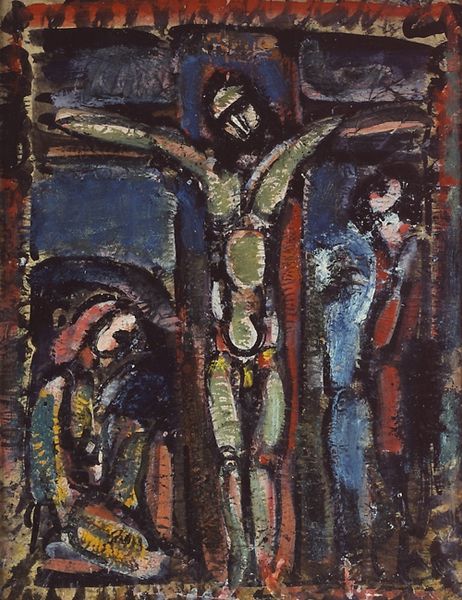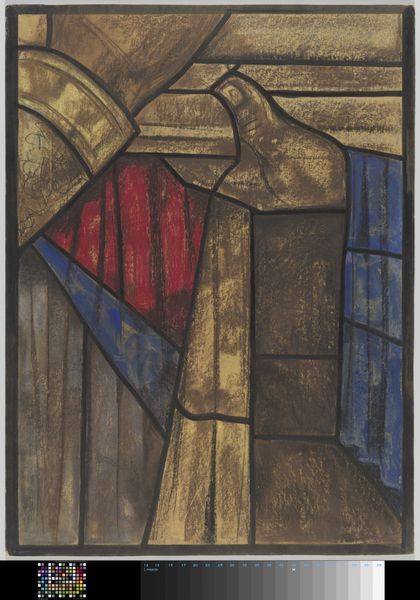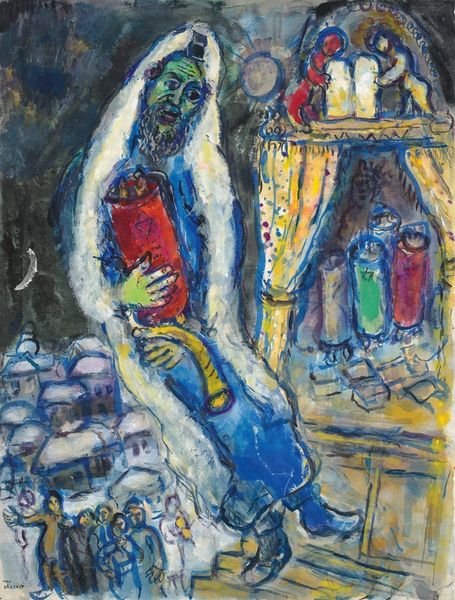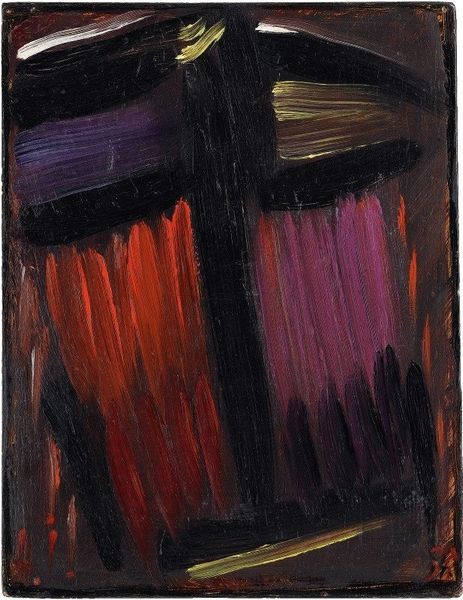
Copyright: National Gallery of Art: CC0 1.0
Curator: Here we have Georges Rouault's "Les Trois Croix," made sometime between 1936 and 1938. The artwork uses tempera as a medium and takes the form of a print. Editor: My immediate reaction is of intense gravity. The thick black lines create an almost oppressive atmosphere. I am struck by how Rouault has used the material to construct an image with such apparent weight. Curator: It's interesting that you pick up on the line; note how he has deployed the compositional device of the arch framing the crosses; this element underscores the pictorial flatness of the image. And, considering his background in stained glass design, could these robust lines indicate his earlier craft? Editor: Precisely, consider the social reality of art production here. Rouault's grounding in artisanal practice significantly shaped his later artistic development, in both material terms but also in the direct, physical engagement inherent in that labour. We often overlook the importance of these tangible aspects. It's important not to divorce process from its historical and material underpinnings. Curator: Certainly, though within those robust boundaries we find subtle color modulations: look closely and observe how color illuminates and provides luminosity from behind those rigid structures. It serves to suggest space. Are the bright blocks of orange, red, and yellow meant to convey warmth? Perhaps referencing flames? Editor: Perhaps a more pertinent question is, what materials are we seeing there? Understanding Rouault's choices about pigment and process can offer richer insights into the social values and economic conditions that affected the work's genesis, because artistic labour exists within society's wider production methods. Curator: Perhaps, but I tend to think this work allows viewers to project emotion while subtly referencing the history of religious painting and its symbolic framework. It serves almost as a mirror reflecting interior feeling. Editor: While Rouault evokes history, his focus on process reveals production systems of which the modernism art world is eager to downplay the legacy to maintain a distance between itself and laboring craft production. Curator: This brief dialogue highlights both the formal elegance and the embedded labor systems within Rouault's affecting print. Editor: Yes, hopefully encouraging viewers to consider art both as aesthetic expression and as material output born from wider structures.
Comments
No comments
Be the first to comment and join the conversation on the ultimate creative platform.
